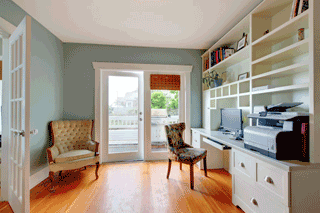Quote of the Week
“We recently saw our strongest month of home lending on record in June, which is a sign of very strong demand.”
Andy Kerr, NAB home ownership executive
Labor Changes Gearing Policy
 The property industry has welcomed the ALP announcement that it will not change the rules on negative gearing and capital gains tax.
The property industry has welcomed the ALP announcement that it will not change the rules on negative gearing and capital gains tax.
The Federal Shadow Cabinet has committed to maintain the existing arrangements, after Labor’s policy to scrap negative gearing and raise CGT was a major issue at the past two Federal Elections. Opposition Leader Anthony Albanese says the commitment will provide “certainty and clarity to Australian working families”.
The Property Council has welcomed the move, noting that previous policies would have hurt the economy, cost jobs and had little impact on affordability. Master Builders CEO Denita Wawn says the move is good news for the building industry, the economy and the community.
Modelling by Deloitte Access Economics found Labor’s previous policy would have reduced GDP by $1.5 billion, shrunk the construction sector by $766 million and failed to improve affordability.
NAB Tips 20% Price Rises
 NAB has raised its price growth forecasts, tipping rises averaging 18.5% across the capital cities this year. The bank has upgraded its expectations for most cities, with Sydney to rise 21.6% , Melbourne 17.6%, Brisbane 19.5%, Adelaide 17.4%, Perth 11.6% and Hobart 23.5%.
NAB has raised its price growth forecasts, tipping rises averaging 18.5% across the capital cities this year. The bank has upgraded its expectations for most cities, with Sydney to rise 21.6% , Melbourne 17.6%, Brisbane 19.5%, Adelaide 17.4%, Perth 11.6% and Hobart 23.5%.
But the NAB report forecasts only moderate growth in 2022, with rises around 4% across the capital cities.
In April, the bank predicted Sydney prices would rise only 6% this year, Melbourne 5.5%, Brisbane 6.2%, Adelaide 6%, Perth 5.6% and Hobart 6.1%.
“NAB has revised up its forecasts based on the faster-than-expected growth in prices over recent months,” the report says. “From here we see the monthly pace of growth slowing but continuing at a solid rate.”
The current lockdowns are expected to have a sizeable impact on the economy, but the impact will be transitory. “We remain optimistic that as restrictions are eased, activity will rebound, as has been the case in previous lockdowns,” it says.
Tassie Leads Economic Growth
 Tasmania continues to lead in the latest CommSec State of the States report, while Queensland and WA show the strongest momentum moving into the second half of 2021, largely due to internal migration.
Tasmania continues to lead in the latest CommSec State of the States report, while Queensland and WA show the strongest momentum moving into the second half of 2021, largely due to internal migration.
The report finds that, for the sixth quarter in a row, Tasmania is the best-performing economy. It led on four of the eight indicators (population growth, equipment investment, employment and dwelling starts) and ranked second on another two indicators.
However, there is little to separate the other states and territory economies. Victoria was 2nd, ACT 3rd, South Australia 4th, NSW 5th, WA 6th, Queensland 7th, and Northern Territory 8th.
CommSec chief economist, Craig James says: “It’s important to note that all states and territories are performing solidly. That is no small feat in an environment dominated by Covid with the frequent lockdowns and border closures.”
Work From Home Sets In
 The remote working trend which has helped drive the property boom in regional areas and smaller cities shows no sign of slowing down. Data from networking and job site LinkedIn finds that employers are embracing greater work-life balance, with the number of jobs offering remote work options still rising.
The remote working trend which has helped drive the property boom in regional areas and smaller cities shows no sign of slowing down. Data from networking and job site LinkedIn finds that employers are embracing greater work-life balance, with the number of jobs offering remote work options still rising.
In 2020, job listings offering flexible work options had a 14-fold rise compared to pre-pandemic figures. Despite many businesses returning to the office last financial year, ads in the first half of 2021 including a work-from-home choice rose three times on last year.
Demand for property in the regions, which has been strong for several years, has caused prices to rise 17.7% in FY2021, CoreLogic says, compared to 12.4% in the capital cities.
LinkedIn managing director Matt Tindale says organisations are looking at more flexible arrangements so they can access a greater pool of talent from across the country. “We’ve gone through the greatest workplace upheaval anyone can remember and we really think this is here to stay,” Tindale says.
Clearances Remain Strong
 Canberra (95%) and Adelaide (82%) led capital city auction clearances last week, while Sydney and Melbourne maintained clearance rates above 70% despite their lockdowns.
Canberra (95%) and Adelaide (82%) led capital city auction clearances last week, while Sydney and Melbourne maintained clearance rates above 70% despite their lockdowns.
There were 1,849 homes taken to auction across the combined capital cities, down from the 2,153 originally expected earlier in the week – with Melbourne, Sydney and Adelaide in lockdown.
Of the 1,509 results collected so far, 75% were successful, down slightly on the previous week’s preliminary clearance rate of 76%, which revised down to 74% at final figures. This week last year, only 54% of auctions were successful.
There were 858 auctions held across Melbourne this week, down from the 1,087 originally scheduled, with 72% successful. Sydney auctioned 597 properties, 75% successful. Canberra was the best-performing city auction market last week with a clearance rate of 95%, followed by Adelaide at 82%. Brisbane was the busiest of the smaller capital cities with 169 auctions held and a clearance rate of 75%.




